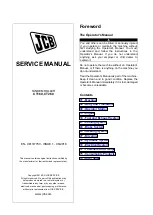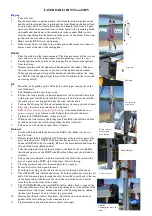
DOC. MIE91093 Rev. 1.34
Page 98 of 145
to test phase to phase faults by modifying the fault voltage
amplitudes only, provided that the zone limit is very close to
the nominal setting, and amplitude changes do not exceed
5%: if they are more, also phase angles must be computed
and changed.
Other important note is that fault amplitudes of the two
phases should be adjusted to the same value: different values
cause a phase error between the phase to phase voltage and
the fault current. This is particularly true when the phase to
phase voltage tends to zero: in this situation, minor amplitude
errors cause the complete loss of control on fault angle. For
these reasons,
it is not advisable to perform phase to
phase fault tests unless with fault voltages of 5 V or
more.
In general, it is advisable to use the third generator,
the one not involved in the fault, to measure the phase to
phase fault voltage.
Last but not least, the phase arrangement of fault voltages is
not the same as pre-fault voltages. This means that we have
to compute the voltage to current fault angle, and the angle
between pre-fault voltage and fault voltage.
In conclusion, given the fault impedance Z and the test angle
φ, we have to perform the following steps:
. Select the fault current If;
. Compute the fault voltage Vf (it is the phase to phase
voltage!);
. Compute the module of phase fault voltage VX;
. For both phases, compute the angle φX of the fault voltage
with respect to the fault current (that is in phase with the
power supply);
. For both phases, compute the angle of the healthy voltage
with respect to the power supply.
1) Fault current
The current will be adjusted
on the two faulty phases
(1
and 2; 2 and 3; 3 and 1), while the other remains at zero; its
value is the one selected by the operator (for instance, 10 A).
















































